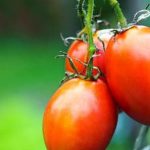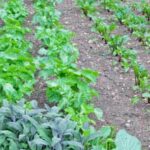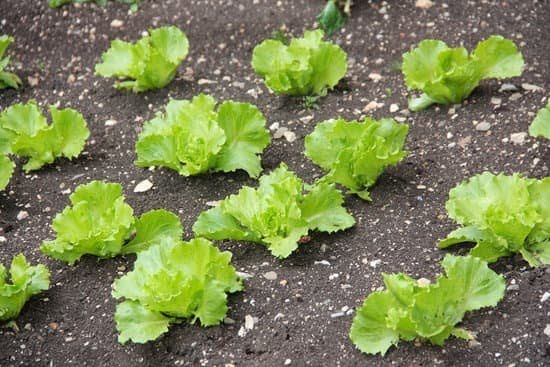Are you interested in starting your own vegetable garden? Whether you’re a seasoned gardener or just starting out, learning some tips for vegetable gardening can help you create a successful and bountiful harvest. Vegetable gardening not only provides you with fresh, healthy produce, but it also offers numerous other benefits. From reducing stress to saving money on groceries, there are plenty of reasons to start your own vegetable garden.
One of the first steps to successful vegetable gardening is selecting the right location for your garden. The location will determine the amount of sunlight, water drainage, and overall growing conditions for your vegetables. Once you have the perfect spot for your garden, soil preparation is key to creating the optimal growing environment for your vegetables. Understanding how to amend and nourish the soil will lay the foundation for healthy plant growth.
In addition to location and soil preparation, choosing the right vegetables for your specific climate and soil type is crucial. Not all vegetables thrive in every environment, so it’s important to select varieties that are well-suited for your area. By following these important introductory tips, you’ll be well on your way to a successful and rewarding journey of vegetable gardening.
Selecting the Right Location for Your Vegetable Garden
When it comes to starting a vegetable garden, one of the most crucial decisions you will make is choosing the right location. The success of your garden largely depends on this factor, as vegetables need a good amount of sunlight and well-drained soil to thrive. Here are some tips to help you select the right location for your vegetable garden:
First and foremost, look for a spot in your yard that receives at least 6-8 hours of sunlight per day. Vegetables need ample sunlight to grow and produce a bountiful harvest. Avoid areas with too much shade from trees or buildings.
Next, consider the proximity to a water source. It’s important that your vegetable garden is easily accessible to water, whether it’s through a hose or irrigation system. This will make it more convenient for you to water your plants regularly, especially during hot summer months.
Lastly, take into account the quality of the soil in your chosen location. Conduct a soil test to determine its pH levels and nutrient content. You may need to amend the soil by adding organic matter such as compost or manure to improve its structure and fertility.
By carefully selecting the right location for your vegetable garden, you can set yourself up for a successful growing season and enjoy a bountiful harvest of fresh, homegrown vegetables.
| Tips for Selecting the Right Location | Benefits |
|---|---|
| 6-8 hours of sunlight per day | Provides ample sunlight for vegetable growth |
| Proximity to water source | Makes watering more convenient |
| Soil quality | Determines fertility and structure of soil |
Soil Preparation
When it comes to vegetable gardening, one of the most crucial aspects is preparing the soil for optimal plant growth. Here are some tips to create the perfect growing environment for your vegetable garden:
1. Test and Amend Your Soil: Before planting your vegetables, it’s important to test your soil to determine its pH level and nutrient content. You can use a DIY soil testing kit or send a sample to a professional lab. Based on the results, you may need to amend your soil with organic matter, compost, or specific fertilizers to ensure it has the right balance of nutrients for healthy plant growth.
2. Create Raised Beds or Rows: If your soil quality is poor or if you have heavy clay or rocky soil, consider creating raised beds or rows for your vegetable garden. This allows you to control the type of soil used and improves drainage, which is essential for preventing waterlogging and root rot in plants.
3. Mulch Your Garden: Adding mulch to your vegetable garden helps retain moisture, suppresses weeds, and regulates soil temperature. Organic mulch such as straw, leaves, or wood chips also decomposes over time, adding valuable nutrients to the soil.
4. Rotate Crops: To maintain the fertility of your soil and minimize pest and disease problems, practice crop rotation by planting different types of vegetables in different areas of your garden each season. This helps break pest cycles and prevents depletion of specific nutrients in the soil.
By following these tips for soil preparation, you can create an ideal growing environment for your vegetable garden and set the stage for a successful harvest.
Remember that taking care of the ground where you want to grow is vital so be sure follow these essential steps when preparing before planting any vegetables in order to assure that they reach maximum growth: Testing & amending; Creating raised beds; Using mulch; Crop rotating.
Choosing the Right Vegetables for Your Climate and Soil Type
When it comes to vegetable gardening, one of the most important factors to consider is choosing the right vegetables for your specific climate and soil type. This step is crucial in ensuring a successful and bountiful harvest. By selecting the appropriate vegetables for your region, you can maximize their growth potential and overall yield.
Understanding Your Climate
Before you begin planting your vegetable garden, take some time to research and understand the climate of your area. Different vegetables thrive in different climates, so it’s essential to choose varieties that are well-suited to your specific weather patterns.
For example, if you live in a hot and dry climate, heat-tolerant vegetables like tomatoes, peppers, and eggplants would be a good choice. On the other hand, if you reside in a cooler climate, cold-hardy vegetables such as broccoli, cabbage, and carrots may be more suitable.
Assessing Your Soil Type
Another important consideration when choosing vegetables for your garden is the type of soil you have. Whether it’s sandy, clayey, or loamy soil, different vegetables have varying preferences when it comes to soil type.
Understanding your soil’s composition will help you select vegetables that will thrive in your garden. For instance, root crops like potatoes and radishes prefer loose and well-draining soil, while leafy greens such as lettuce and spinach do well in fertile and moisture-retentive soil.
Consulting With Local Experts
If you’re unsure about which vegetables are best suited for your climate and soil type, don’t hesitate to seek advice from local gardening experts or extension services. These professionals can provide valuable insights into which varieties thrive in your area and offer recommendations based on their knowledge of local growing conditions. By consulting with local experts, you can gain a better understanding of which vegetables are most likely to succeed in your vegetable garden.
By carefully considering your climate and soil type when selecting vegetables for your garden, you’ll set yourself up for a successful growing season. With the right choices in place, you can look forward to enjoying an abundant harvest of homegrown produce that thrives in your specific growing conditions.
Planting and Watering Tips for Optimal Growth
When it comes to vegetable gardening, proper planting and watering techniques are crucial for the optimal growth of your plants. Here are some valuable tips to help you ensure a successful and bountiful harvest:
1. Planting Depth: It is important to plant your vegetables at the correct depth. Each type of vegetable has its own specific planting depth requirements, so be sure to follow the instructions on the seed packet or plant label. Planting too shallow or too deep can affect the growth and development of your vegetables.
2. Watering Frequency: The frequency of watering your vegetable garden will depend on several factors such as the type of soil, weather conditions, and the specific needs of each plant. Generally, most vegetables require about 1 inch of water per week, either from rainfall or irrigation. It’s essential to water deeply to encourage strong root growth and avoid shallow watering that can lead to weaker root systems.
3. Mulching: Applying mulch around your vegetable plants can help retain moisture in the soil, regulate soil temperature, prevent weed growth, and reduce water evaporation. Organic mulches such as straw, grass clippings, or wood chips are excellent choices for vegetable gardens.
Implementing these planting and watering tips for vegetable gardening will help ensure healthy and robust growth for your homegrown vegetables.
| Vegetable Gardening Tip | Details |
|---|---|
| Planting Depth | Follow specific planting depth requirements for each type of vegetable |
| Watering Frequency | About 1 inch of water per week; deep watering is important for strong root growth |
| Mulching | Use organic mulches to retain moisture, regulate soil temperature, and prevent weed growth |
Pest and Disease Management
Identifying Common Pests and Diseases
One of the key challenges in vegetable gardening is managing pests and diseases that can affect the health of your plants. Common pests such as aphids, caterpillars, and slugs can wreak havoc on your garden if not properly controlled.
In addition, diseases like powdery mildew, blight, and root rot can also pose significant threats to your vegetable crops. It’s important to be able to recognize the signs of pest infestation or disease development early on in order to take appropriate action.
Preventative Measures for Pest and Disease Control
Prevention is often the best approach when it comes to managing pests and diseases in your vegetable garden. By implementing good cultural practices such as proper spacing between plants, adequate irrigation, and regular inspection of your garden for any signs of trouble, you can reduce the likelihood of infestations or outbreaks.
Additionally, using organic pest control methods such as companion planting, hand-picking pests, or applying natural remedies like neem oil or insecticidal soap can help minimize the impact of pests on your garden.
Integrated Pest Management Strategies
For more serious pest or disease problems, an integrated pest management (IPM) approach may be necessary. This holistic strategy combines multiple control methods to minimize damage to crops while also being environmentally sustainable. IPM may involve using biological controls like introducing beneficial insects or microorganisms into the garden, as well as employing mechanical methods like traps or barriers to deter pests. When all else fails, targeted and judicious use of chemical pesticides should be considered as a last resort.
By understanding how to effectively manage pests and diseases in your vegetable garden, you can ensure the health and productivity of your crops throughout the growing season. Implementing preventative measures and adopting an integrated approach to pest control will help protect your investment in homegrown produce.
Maintenance Tips for a Successful Harvest
Vegetable gardening can be a fulfilling and rewarding experience, especially when you see the fruits of your labor in the form of a successful harvest. However, maintaining your vegetable garden throughout the growing season is crucial to ensure that you will have a bountiful harvest. Here are some maintenance tips for a successful harvest:
- Regular Weeding: Keeping your vegetable garden free from weeds is essential to prevent competition for nutrients and water. Be sure to regularly weed your garden beds to maintain an ideal growing environment for your vegetables.
- Fertilization: Providing the right nutrients to your vegetable plants is crucial for their growth and productivity. Consider using organic fertilizers or compost to enrich the soil and promote healthy plant growth.
- Pruning and Thinning: Proper pruning and thinning of vegetable plants can help improve air circulation, reduce disease risk, and encourage larger yields. Trim overgrown branches, remove diseased or damaged leaves, and thin out overcrowded vegetables for better results.
Additionally, staying on top of watering needs, monitoring for pests and diseases, and providing support for climbing plants such as tomatoes and cucumbers are also important aspects of maintaining a successful vegetable garden.
Remember that ongoing care and attention to your vegetable garden will lead to a more bountiful harvest at the end of the growing season. By following these maintenance tips, you can set yourself up for success in reaping the rewards of your homegrown vegetables.
Harvesting and Storing Your Homegrown Vegetables
Once your vegetables are ready for harvesting, it is important to gather them at the right time to ensure the best flavor and nutritional value. Different vegetables have different harvesting times, so be sure to familiarize yourself with the specific guidelines for each type you are growing. For example, tomatoes should be harvested when they are fully colored and slightly soft to the touch, while carrots should be pulled from the ground when they have reached their full size.
Proper storage is also crucial in maintaining the quality of your homegrown vegetables. Some vegetables can be stored at room temperature, while others need to be refrigerated or even frozen. For instance, root vegetables like potatoes and onions can be stored in a cool, dark place such as a cellar or pantry, while leafy greens and herbs should be refrigerated to prolong their freshness.
Another important aspect of storing your harvest is proper handling. After harvesting, make sure to clean off any excess soil or debris from your vegetables and handle them carefully to avoid bruising or damage. Storing them in breathable containers such as paper bags or perforated plastic bags can also help extend their shelf life.
By following these tips for vegetable gardening, you can ensure that your hard work pays off with a bountiful and delicious harvest that will last well beyond the growing season.
Conclusion
In conclusion, vegetable gardening offers a multitude of benefits for both the gardener and the environment. Not only does it provide a sustainable source of fresh, organic produce, but it also promotes physical activity and mental well-being. The act of tending to a garden can be therapeutic and rewarding, offering a sense of accomplishment as you watch your plants thrive and produce an abundant harvest.
By following the tips for vegetable gardening outlined in this article, you can create the perfect growing environment for your homegrown vegetables. From selecting the right location and preparing the soil to choosing the appropriate vegetables for your climate and soil type, these tips are essential for success in vegetable gardening. Additionally, proper planting, watering, pest management, and maintenance techniques are crucial for ensuring optimal growth and a successful harvest.
As you embark on your journey in vegetable gardening, remember that patience and dedication are key virtues. While there may be challenges along the way, the satisfaction of harvesting and storing your own homegrown vegetables makes the effort worthwhile. Whether you are a novice or experienced gardener, implementing these tips will enhance your vegetable gardening experience and ultimately lead to a bountiful harvest that you can enjoy with family and friends. Happy gardening.
Frequently Asked Questions
How Do You Grow a Perfect Vegetable Garden?
Growing a perfect vegetable garden requires careful planning, preparation, and maintenance. Start by choosing the right location with plenty of sunlight and well-drained soil. Consider the specific needs of each vegetable, such as spacing, watering, and fertilizing. Regular weeding and pest control are also essential for a thriving garden.
How Can I Improve My Vegetable Garden?
There are several ways to improve your vegetable garden. First, make sure to enrich the soil with organic matter like compost or manure to provide essential nutrients for plant growth. Proper watering is crucial, so consider installing a drip irrigation system to ensure consistent moisture levels. Additionally, rotating crops each season can help prevent disease build-up in the soil.
What Is a Good Layout for a Vegetable Garden?
A good layout for a vegetable garden often involves grouping plants according to their water and sunlight needs. Consider planting taller vegetables on the north side of the garden so they won’t shade smaller plants.
Raised beds can be used to separate different types of vegetables, making it easier to maintain soil quality and manage pests. Additionally, leaving adequate space between rows will allow for easy access and maintenance of the garden.

If you’re looking to get into vegetable gardening, or are just looking for some tips on how to make your current garden better, then you’ve come to the right place! My name is Ethel and I have been gardening for years. In this blog, I’m going to share with you some of my best tips on how to create a successful vegetable garden.





